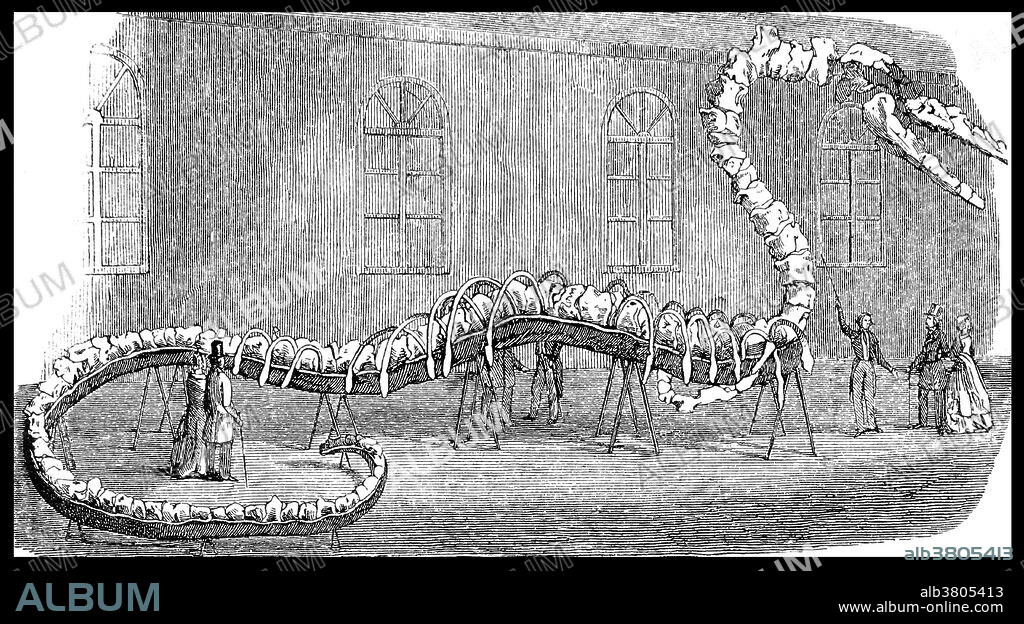alb3805413
Sea Serpent Hoax, 1845

|
Ajouter à une autre Lightbox |
|
Ajouter à une autre Lightbox |



Avez-vous déjà un compte? S'identifier
Vous n'avez pas de compte ? S'inscrire
Acheter cette image.
Sélectionnez l'usage:

Titre:
Sea Serpent Hoax, 1845
Légende:
Voir la traduction automatique
Basilosaurus cetoides belongs to an extinct group of whales known as the Archaeoceti that lived 40 to 34 million years ago. It grew 40 to 65 feet in length, and was the largest known animal of its day. In 1834, Richard Harlan first described a single backbone "of enormous dimensions," which had been discovered along with other fragmentary remains in Arkansas, which he called Basilosaurus. Ten years after Harlan's discovery, Albert Koch, showman, and proprietor of the St. Louis Museum, set out to find the remains of a "gigantic fossil reptile," which he intended to mount for display in a traveling exhibit to raise money for his collecting expeditions. He found numerous fossil bones, including a complete skull and announced that he had discovered a new species of reptile that he named Hydrarchos. In 1845, he exhibited the "great sea serpent" in NYC, for an entry fee of 25 cents. Leading the public to believe that the bones were from an individual skeleton, he claimed that it measured 114 feet long and weighed 7500 pounds.
Crédit:
Album / Science Source / Biodiversity Heritage Library
Autorisations:
Taille de l'image:
4800 x 2678 px | 36.8 MB
Taille d'impression:
40.6 x 22.7 cm | 16.0 x 8.9 in (300 dpi)
Mots clés:
 Pinterest
Pinterest Twitter
Twitter Facebook
Facebook Copier le lien
Copier le lien Email
Email
